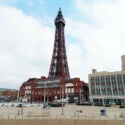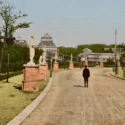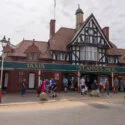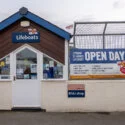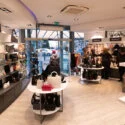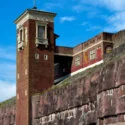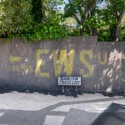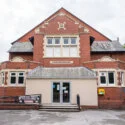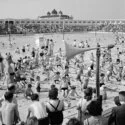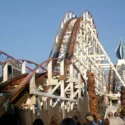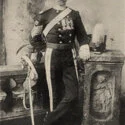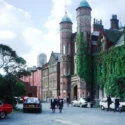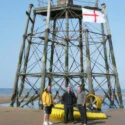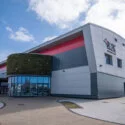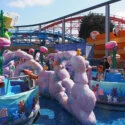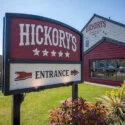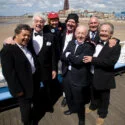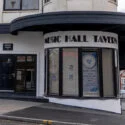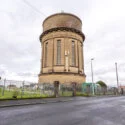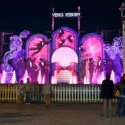The Wyre Light was a forty-foot (12 m) tall iron screw-pile lighthouse marking the navigation channel to the town of Fleetwood, Lancashire. Construction began in 1839 and was undertaken by Alexander Mitchell and Son of Belfast utilising a screw pile construction he had developed during construction of the Maplin Sand lighthouse in the Thames estuary in 1838. The Wyre Light was first lit in 1840 and was the first screwpile lighthouse ever to be lit. Although construction of the Maplin Sands Light on the northern bank of the Thames estuary had started before Wyre Light, the latter was completed in a much shorter period of time. These lights inspired other similar constructions such as the Thomas Point Shoal Light in the United States.
The Wyre Light stood two nautical miles (3.7 km) offshore on the ‘North Wharf Bank’, sandbanks which mark the ‘Lune Deep’ and the navigation channel of the Wyre. The Wyre Light along with a pair of on shore lighthouses, the Beach Lighthouse and the Pharos provided a navigational guide to shipping entering the Wyre estuary. The Light’s base consisted of seven wrought iron piles embedded in the sands. Each was sixteen feet (4.9 m) long with cast-iron screw bases three feet (0.91 m) in diameter. The six corner piles formed a hexagonal platform of fifty feet (15 m) diameter. (The seventh pile served as a centre pillar.) The platform supported the lantern and a two-storey building to house the keeper. Construction began in 1839 and the lantern was lit on 6 June 1840. The building was destroyed by fire in 1948 and not replaced. After the fire, the beacon was made automatic and eventually replaced by a lighted buoy in 1979, leaving behind a derelict structure. On 25 July 2017, the lighthouse partially collapsed into the sea.
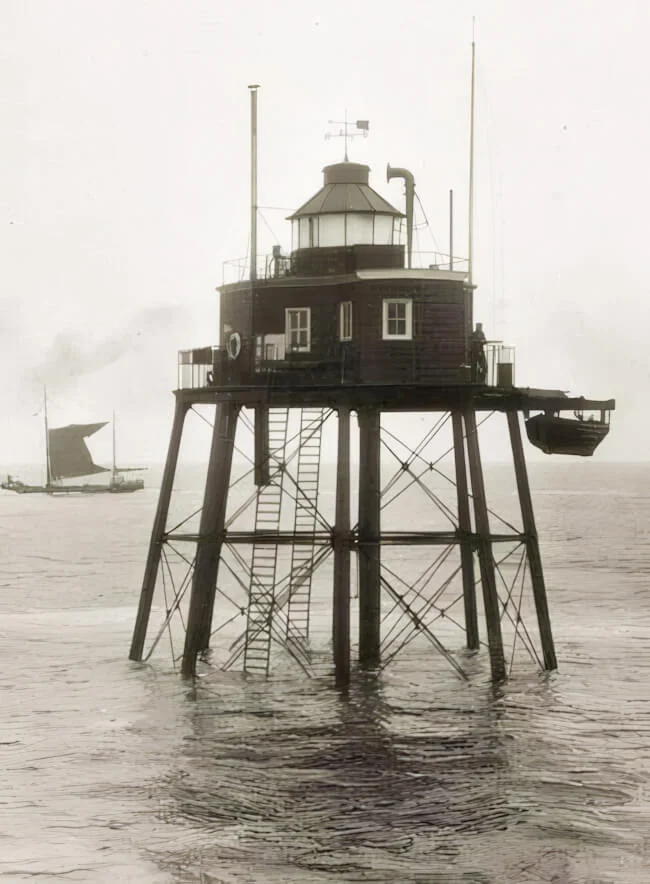
Wyre Light Lighthouse circa 1900
Wyre Light: The Forgotten Sentinel of the Irish Sea
Off the coast of Fleetwood, on the treacherous sands of the North Wharf Bank, stand the skeletal remains of a once-pioneering structure: the Wyre Light. Erected in 1840, it was the first screw-pile lighthouse to be lit in the United Kingdom and a marvel of early Victorian engineering. Its origins lie in the vision of Sir Peter Hesketh-Fleetwood and naval officer Captain Henry Mangles Denham, who, along with architect Decimus Burton, designed a navigational system to guide ships safely through the shifting sands into the River Wyre. The system comprised two shore-based lighthouses—the Pharos (Upper) and the Beach (Lower) lights—and a third offshore beacon, the Wyre Light, situated approximately two nautical miles from land.
The Wyre Light was constructed on a hexagonal iron platform supported by seven screw piles—an innovation by blind Irish engineer Alexander Mitchell, whose design revolutionised maritime construction in soft, sandy seabeds. The lighthouse’s lantern room stood atop a two-storey living quarters, providing shelter for the keepers who were tasked with operating the light and its associated fog bell. From its first illumination on 6 June 1840, the Wyre Light served as a crucial guide for shipping, forming a transit line with the two onshore lighthouses to aid navigation.
For over a century, lighthouse keepers lived on the structure itself. These men—though largely unnamed in historical records—worked in rotation and endured long periods of isolation in harsh conditions. Life on the lighthouse was physically demanding and mentally taxing. Supplies had to be ferried out by boat, and the iron-and-wood construction provided scant protection from the elements. Despite the challenges, the lighthouse was manned continuously, and records suggest that during this period, the living quarters were functional if spartan. A glimpse into this way of life is provided by Frank Raby, a keeper who lived in a nearby shore-based cottage with his family around 1946. Although Raby did not reside in the lighthouse itself, his experience reflects the hardship endured by those maintaining it. His family endured the lack of running water, paraffin lighting, and salt-contaminated wells, echoing the difficult conditions offshore. However, this human connection to the lighthouse ended abruptly on 16 May 1948, when a training exercise involving flares went awry. A fire broke out on the veranda of the Wyre Light, quickly engulfing the wooden accommodation. The RNLI lifeboat was despatched to rescue the keepers, but the structure was beyond saving.
Following the fire, the decision was made not to rebuild the living quarters. Instead, the Wyre Light was converted into an automated beacon, operating without human presence until it was finally decommissioned and replaced by a lighted buoy in 1979. Although its navigational function had ended, the framework of the Wyre Light continued to stand as a rusting silhouette against the Irish Sea. Over time, it deteriorated further, with major structural collapse reported in July 2017. Today, the Wyre Light is a relic of maritime innovation and a haunting monument to the isolation and resilience of lighthouse keepers. No formal conservation body claims ownership, and the structure faces continued decline. Yet, it remains embedded in Fleetwood’s identity, drawing the attention of local artists, historians, and coastal walkers who remember it not just as an engineering triumph but as a symbol of dedication, human endurance, and the unforgiving nature of the sea.
Be sure to have a look at Blackpool Timeline’s posts on the other two lighthouses in Fleetwood – the Upper Lighthouse and the Lower Lighthouse.
For the Save the Wyre Light Lighthouse-Fleetwood Facebook page please click HERE.
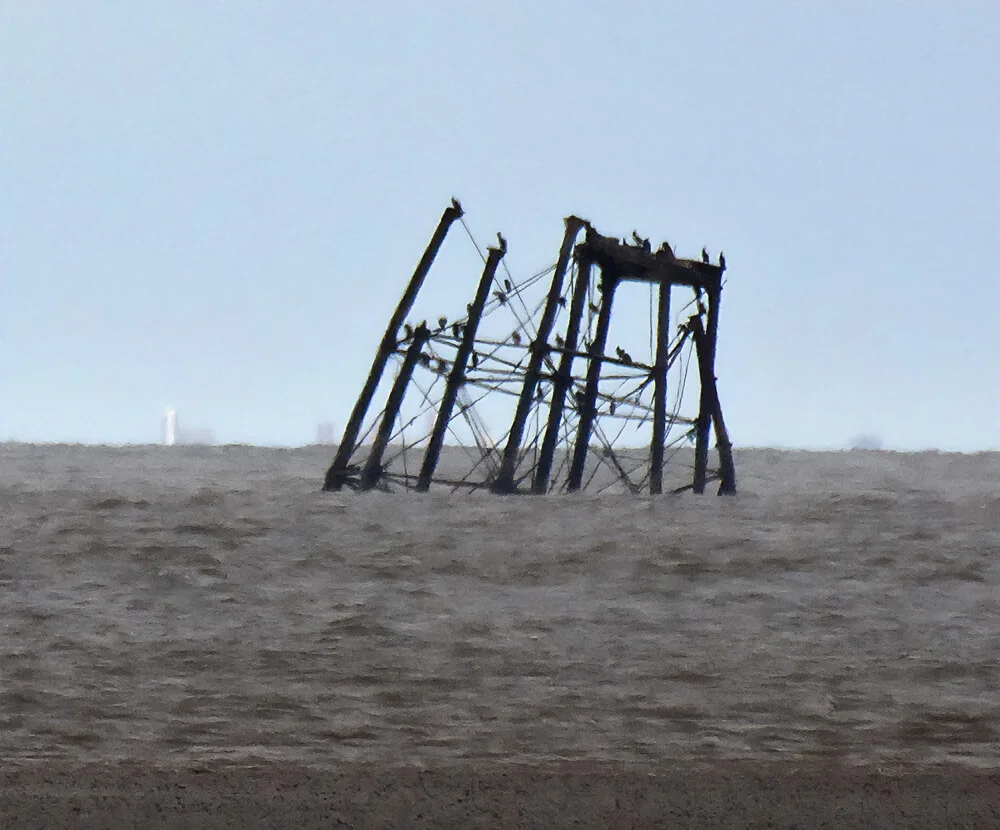
Remains of the Wyre Light, a 40-foot tall iron screw-pile lighthouse marking the navigation channel to the town of Fleetwood. © Alamy
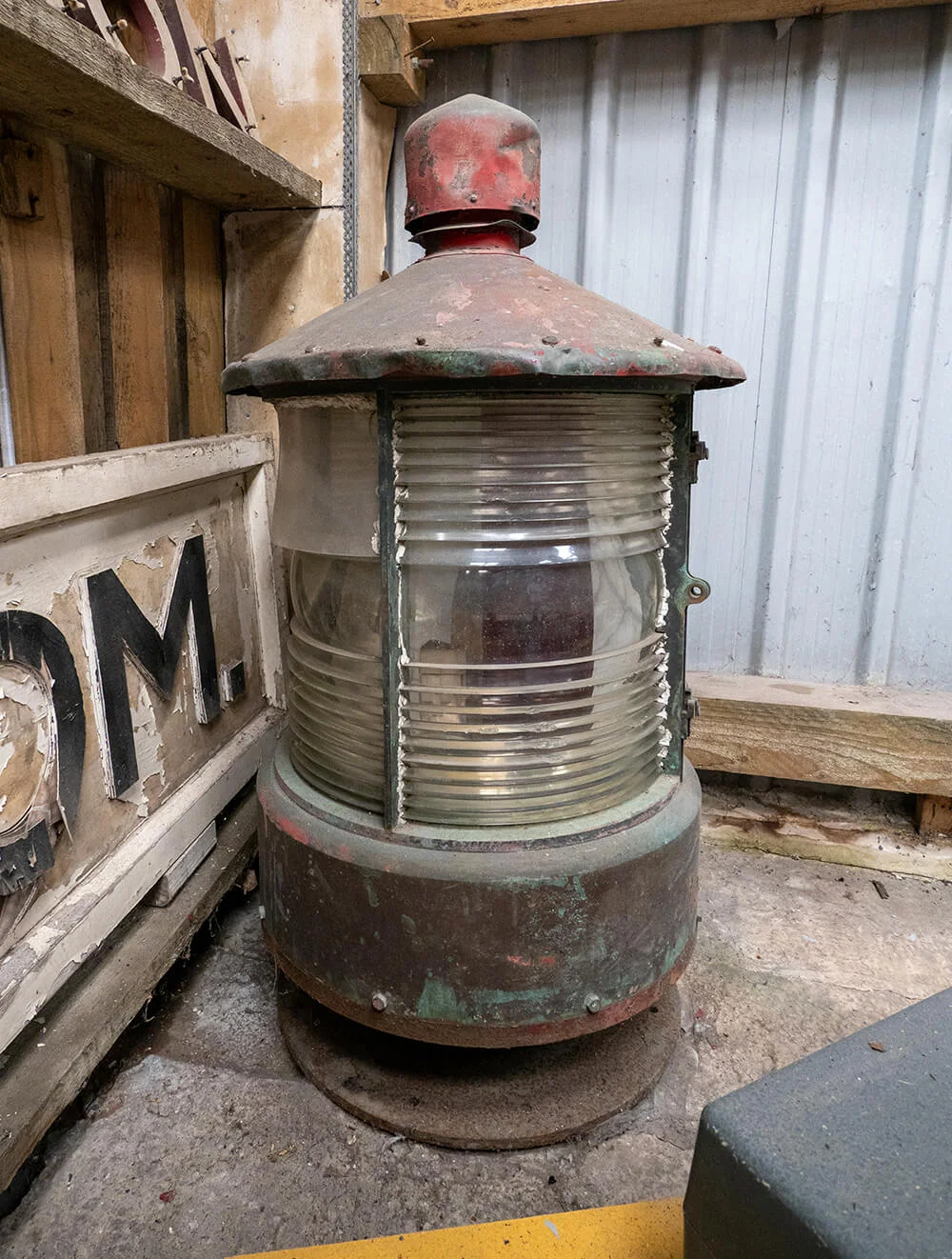
Fortunately, the actual searchlight was saved. You can see it at Fleetwood Museum. © Deeper Blue Marketing & Design Ltd
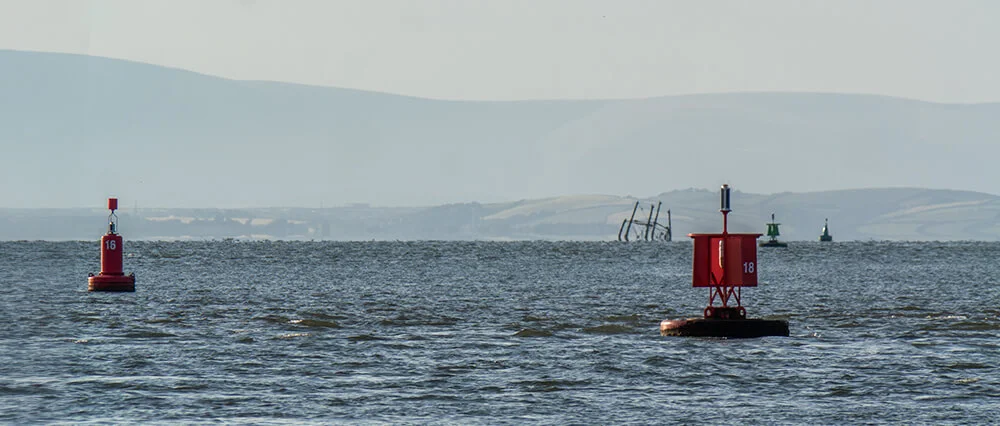
Image taken from the beach near the Lower Lighthouse. © Deeper Blue Marketing & Design Ltd
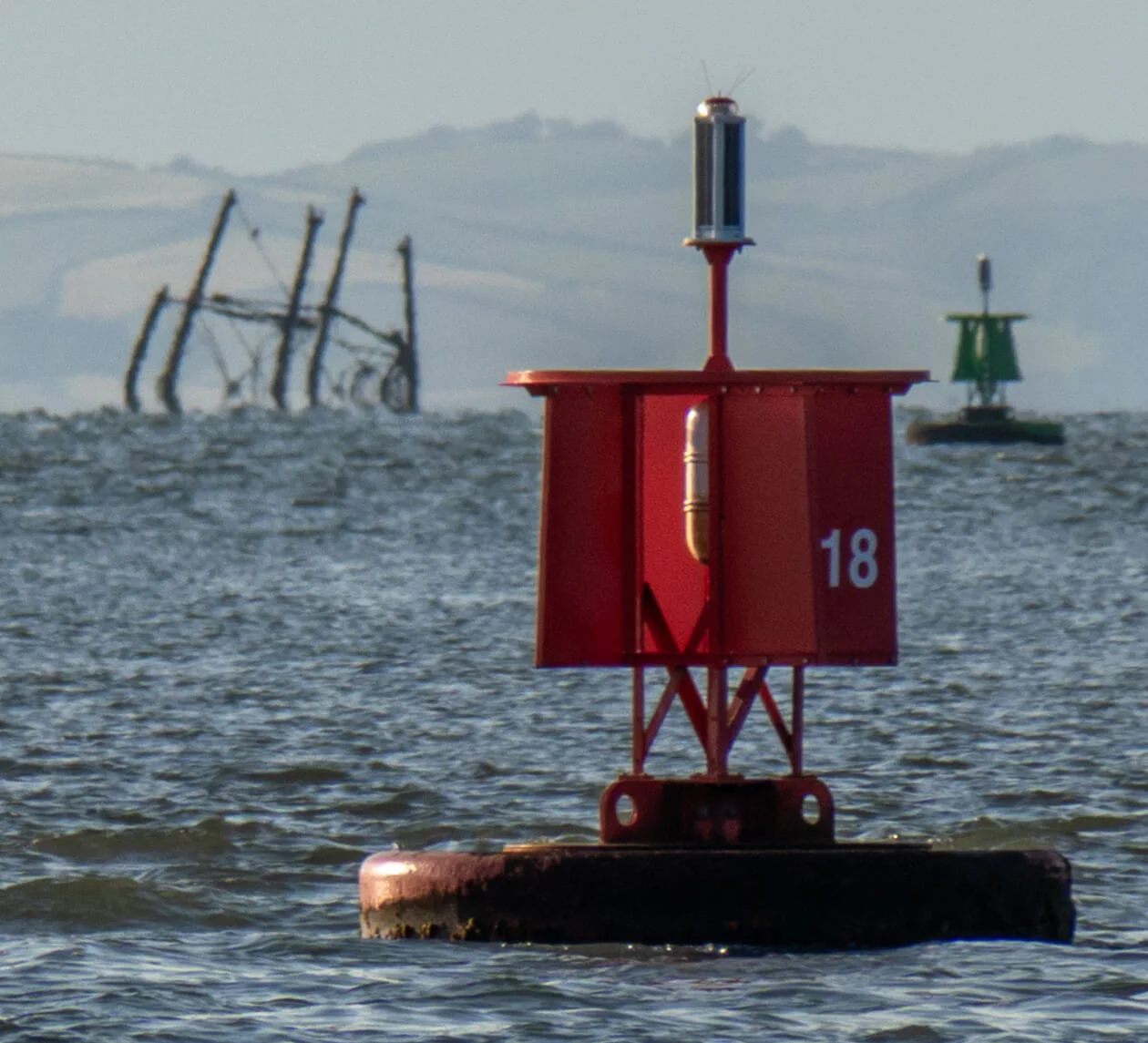
Close-up crop of above image. © Deeper Blue Marketing & Design Ltd

Wyre Light at Lower tide © Deeper Blue Marketing & Design Ltd
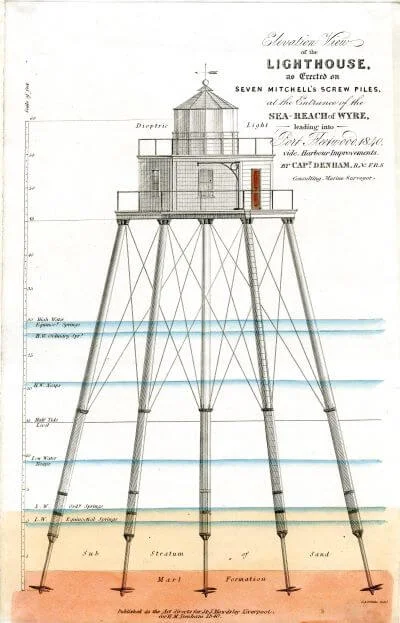
1840 elevation drawing of Wyre Light – public domain image
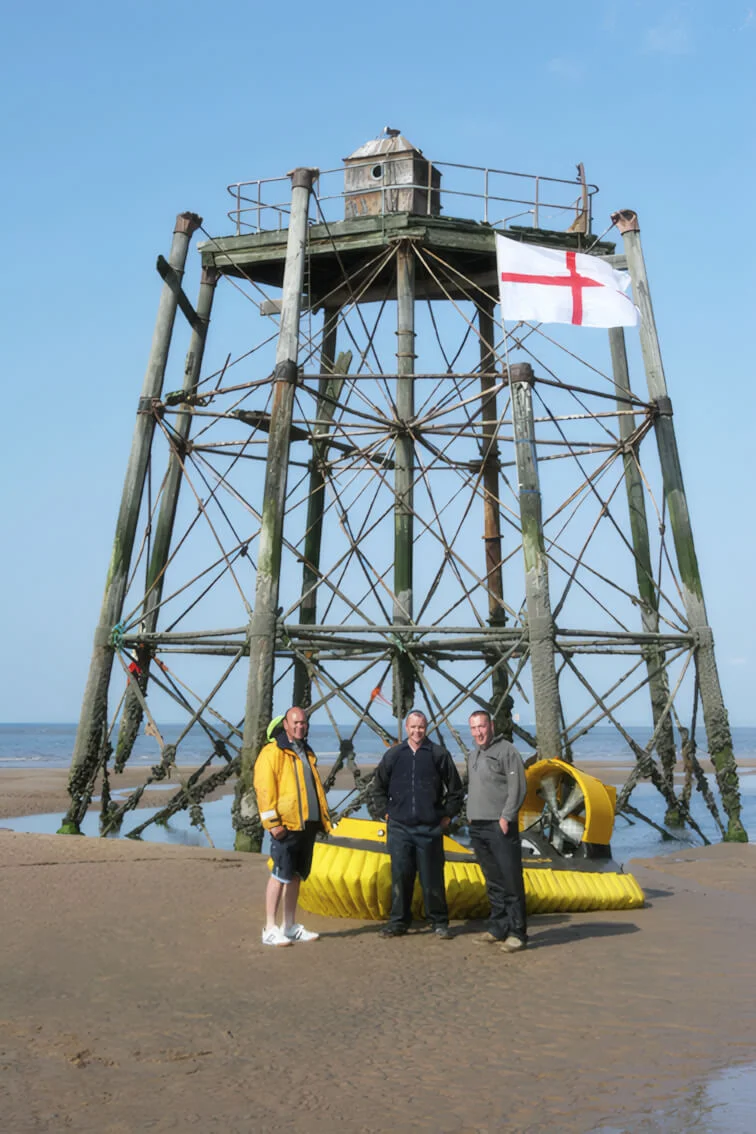
The derelict Wyre Light in 2007. © Antony McCann
Featured Image © Antony McCannCC BY-SA 2.0
Additional Images © Deeper Blue Marketing & Design Ltd
Background Image © Alamy

